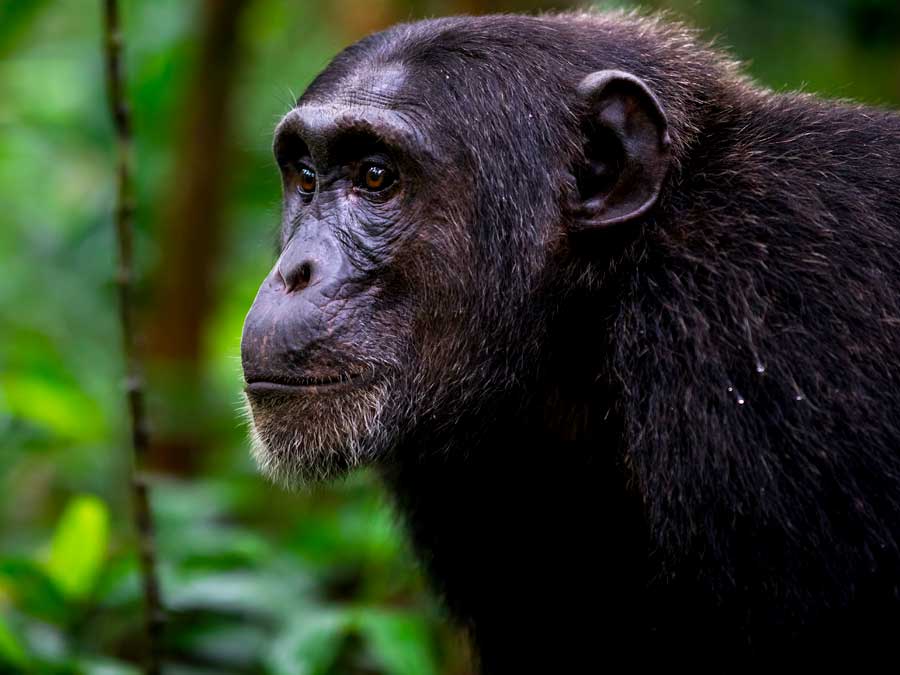Kibale Forest National Park

KIBALE FOREST NATIONAL PARK
Kibale Forest, the Primate capital of East Africa is well-known to the outside World for its high concentration of primates as well as uncharted jungle, savannah, lush wetlands, narrow gorges and breathtaking streams that through the years birthed numerous stories of unforgettable experiences.
The Location and size of Kibale Forest National Park
For only 79500 hectares, Kibale Forest National Park is a treasure trove situated within the western side of the country, at altitudes of 3608 feet at its lowest (along the floor of the Albertine Rift Valley in the extreme southern part to 5216 feet above sea level at its highest and this is at the extreme northern edge. Kibale
Interestingly, Forest National Park forms a relentless forest corridor with the one in savannah-dominant Queen Elizabeth National Park, thus forming a phenomenal 111-mile long wildlife corridor.
The incredible History of Kibale Forest National Park
This verdant and biodiverse region of western Uganda was initially established as a Forest Reserve in the year of 1932 and six decades later (in 1993) gained its “National Park” status hence making it one of the newest Protected Areas in the country. The main aim of gazetting this area was to protect the huge chunk of forest that was originally managed as a logged forest Reserve. Surprisingly, there are over 350 species of trees in Kibale Forest, some of which are as old as 200 years.
Incredible Tourist attractions within the spectacular Kibale Forest National Park
This 795-square kilometer Protected Area is a Paradise and haven to wide array of flora, fauna and stunning sceneries and they include;
Animals
Of the 70 mammal species in this beautiful National Park, 13 are primate species but the endangered Eastern chimpanzees are the most sought-after. Also expect to see grey-cheeked mangabeys, black and white colobus monkeys, Red colobus monkeys, vervet monkeys, red-tailed monkeys, patas monkeys, L’Hoests monkeys, the nocturnal Pottos, olive baboons, blue monkeys, to mention but a few. Other animals that call this jungle home are the forest elephant, sitatunga, forest buffaloes, giant forest hogs, leopards, mongoose, bushpigs, blue duikers, warthogs, jackals, serval cats, African golden cats, civets, etc.
Avifauna
Thanks to its 375 bird species, Kibale Forest National Park is also a renowned birding hot spot and therefore one of the 33 Important Bird Areas. The green-breasted pitta is the most sought-after bird here but birders are also introduced to the colorful western tinkerbird, great blue Turaco, Olive thrush, grey parrots, African jacana, long-tailed cuckoo, Papyrus gonolek, Chubb’s cisticola, African Emerald Cuckoo, African shrike flycatcher, Black-capped waxbill, African wood owls and many others.
The superlative Tourist Adventures within Kibale Forest National Park
The Chimpanzee Trekking and Habituation Tours
It possibly goes without much emphasis that undertaking a chimpanzee trekking tour within Kibale Forest National Park is a must for most travellers. This is undeniably the best way to meet face to face with the habituated troops/communities of these Great Apes while they go about their daily routines. You can opt for the morning session that starts by 8am or better still the afternoon session that begins by 2pm.
Whatever session you decide to go with, expect 30 minutes to 4 hours of hiking through the forest to search for the allocated chimpanzee troop, after which one hour is allocated for viewing and photography. If you feel that one hour is just not enough time to be with these Apes, then book for the Habituation Experience for a whole-day encounter with them.
Guided forest walks
Besides chimpanzee trekking and habituation Tours, Kibale Forest National Park is also famous for its guided forest walks, another favorite for travellers that wish to uncover everything the jungle offers from animals, birds, butterflies to tree species. This is made possible by the well-maintained hiking trails that crisscross the Forest and offers chances of seeing primates especially Olive baboons, grey-cheeked mangabeys, black and white colobus monkeys, other mammals especially forest elephants, bushbucks, buffaloes and warthogs alongside birds and many other treasures.
Bird watching
The different ecosystems of Kibale Forest National Park (dense forest, small patches of grasslands, streams and wetlands) are blessed with abundant bird species that can be properly unearthed during exclusive birding tours. Some of the expected species are the rare green-breasted pitta, Scaly-breasted Illadopsis, Brown-chested Alethe, African grey parrots, yellow-rumped tinkerbird, slender-billed weavers, Great blue Turaco, papyrus gonolek, crowned eagles, African pitta, to mention but a few. The species to be spotted are unpredictable but one thing for sure is that you won’t miss to see between 50 and 100 species in a single birding tour.
Village walks
Tours to Kibale National Park also involve undertaking village walks where travellers are provided the exceptional insight into the riveting cultural heritage of the Bakiga and Batoro people. Some of the activities to expect during these tours are visits to traditional healers, school tours and cultural performances.
Where to lodge while exploring the stunning Kibale Forest National Park
Jungle experiences are spiced by staying in secluded Eco-Lodges, which Kibale National Park offers to its visitors. These places cater for the budget of each traveller-basic, midrange or luxurious and they include Kyaninga Safari Lodge, Ndali Lodge, Primate Lodge, Kanyanchu River Camp, Papaya Lake Lodge, Rwenzori View Guesthouse, Crater Valley Kibale lakeside Resort, Crater Safari Lodge, Mountains of the Moon Hotel, Kibale Forest Camp, Mantana Tented Camp, Nyinabulitwa Resort and Safari Camp, Chimps Nest, Chimpanzee Forest Guesthouse and the secluded Sebitoli Camping area among others.
When is the best time to make tours to Kibale Forest National Park?
If you are planning any kind of Kibale Forest tour, it is important to know what the weather is likely to be like, but it doesn’t guarantee absence of downpours. The Kibale forest rainy season that runs from March to May and again October to November experiences increased downpours that make treks difficult and therefore avoided. Therefore, most tours are made in the dry season-June to September and December to February when rains are minimal and trails drier.
How travellers can get to Kibale Forest National Park
Set at about 320 kilometers and 6-7 hours’ drive from Kampala, the stunning Kibale National Park is reachable via two routes.
Most travellers use the Kampala-Mubende-Fort Portal route covering about 180 miles followed by another 18 miles to Kanyanchu Visitor Center (the Heartbeat of Kibale Forest National Park).
Another route is the Kampala-Masaka-Mbarara Towns to Kibale Forest National Park, although is rarely used because it is longer.



